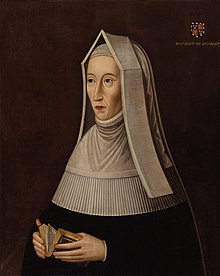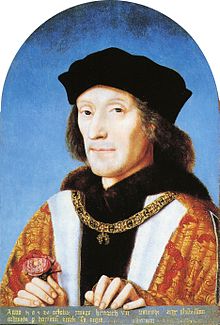ดอกหญ้าน้อยๆแห่งภูเขาคาร์แมล "นักบุญเทเรซา มาร์กาเร็ต"
นักบุญเทเรซา มาร์กาเร็ต แห่ง พระหฤทัยศักดิ์สิทธิ์
St.Teresa Margaret of the Sacred Heart
ฉลองวันที่ : 7 กันยายน
ยินตอนรับทุกท่านเข้าสู่ถิ่นกำเนิดของยุคฟื้นฟูศิลปวิทยาหรือยุคเรอเนซองซ์ นามแคว้นทัสกานีหรือตอสกานาในภาษาอิตาลี แคว้นขนาดใหญ่ในภาคกลางของประเทศอิตาลี ที่มีความสำคัญในทางประวัติศาสตร์ ศิลปกรรม นอกจากนี้ แคว้นทัสกานีก็ยังขึ้นชื่อว่ามีทิวทัศน์งดงามมาก และมีไวน์ที่รสชาติดีเยี่ยมภาษาอิตาลีที่พูดกันในแคว้นทัสกานีเป็นที่ยอมรับว่าเป็นการพูดแบบชาวอิตาลีโดยแท้จริงและยอมรับให้เป็นสำเนียงราชการ นอกจากนั้นแคว้นนี้ยังเป็นที่ตั้งของเมืองมรดกโลกอีกถึง 6 เมือง
“อาเรซโซ” คือหนึ่งในจังหวัดของทัสกานี ณ ที่นี่ในวันที่ 15 กรกฎาคม ค.ศ.1747 ในครอบครัวขุนนางขนาดใหญ่ของท่านเคานต์ อิกญาซิโอ เรดิ กับ คามิลลา บิลเลทิ เด็กทารกเพศหญิงได้ถือกำเนิดขึ้นมาในฐานะบุตรคนที่สองจากสิบสามคนของครอบครัวและได้รับศีลล้างบาปในวันฉลองแม่พระแห่งภูเขาคาร์แมลซึ่งคือเช้าวันถัดมาด้วยนาม “อันนา มารีอา”
ที่อายุประมาณ 5 ปี บิดาของท่านเป็นพยานว่าท่านได้ถวายดวงใจของท่านทั้งหมดแด่พระเจ้าและท่านก็ใช้สิ่งอำนวยความสะดวกทั้งหมดของท่านเพื่อที่จะรู้และรักพระองค์ ซึ่งต่อมาท่านได้สารภาพ ณ ที่สารภาพบาปว่า “จากวัยทารก ดิฉันไม่เคยโหยหาและปรารถนาสิ่งอื่นใดนอกจากการที่จะกลายเป็นนักบุญ” หนูน้อยอันนาเติบโตขึ้นมาเป็นเด็กสาวที่มดวงตาสีฟ้าใสกับผมสีทอง
ในห้องนอนของท่านจะมีแท่นบูชาที่ท่านจะใช้เวลาในช่วงเช้าดื่มด่ำอยู่กับคำอธิษฐานเป็นเวลาหลายชั่วโมงอยู่ที่แท่นนั้น พี่ชายของท่านบันทึกว่าท่านดูราวกับส่วนเล็กน้อยของแม่พระ บ้านของครอบครัวท่านมีสวนอันงดงาม ก็จะพบท่านอยู่ในมุมใดมุมหนึ่งของสวนและกำลังจ้องมองไปยังสวรรค์และคิด ที่ใกล้ๆกับบ้านของท่านนั้นเป็นโบสถ์ที่ได้รับการรังสรรค์ตกแต่งด้วยภาพเฟสโกที่บอกเล่าเรื่องราวของนักบุญฟรานซิส แห่ง อัสซีซี ผู้ที่ท่านเลือกเป็นองค์อุปถัมภ์และแรงบัลดาลใจจากความรักและความยากจนของเขา
ด้วยวัยเพียง 7 ปี ท่านก็ได้เข้าใจถึงวิธีการค้นหาพระเจ้าในทุกสิ่งทั้งในดวงดาวและดอกไม้ และแม้ว่ามันจะเป็นบ้านที่สงบสุขและร่ำรวย เด็กๆก็ไม่ได้รับอนุญาตให้ไม่ทำงาน ดังนั้นท่านจึงได้เรียนรู้วิธีการตัดเย็บเสื้อผ้า การถักไหมพรม ซึ่งบางครั้งก็มีคนพบท่านถักไหมพรมขณะที่กำลังดื่มด่ำกับการสวดภาวนา ต่อมาเมื่อท่านอายุได้ 9 ปี ในขณะที่ครอบครัวส่วนมากไม่นิยมให้เด็กหญิงได้รับการศึกษาในโรงเรียนเพราะถือกันว่าเป็นเรื่องเสียเงินเปล่า แต่สำหรับครอบครัวเรดิ ไม่คิดเช่นนั้น แต่กลับกันพวกเขากลับสนันสนุนการให้การศึกษาแก่ลูกๆทุกคนของเขา รวมทั้งท่านด้วยบิดามารดาของท่านก็ได้ส่งท่านไปรับการศึกษาในโรงเรียนประจำนาม “เซนต์อโพโลเนีย” ของคณะเบเนดิกติน ในเมืองฟลอเรนซ์
ที่บ้านมันเป็นเรื่องง่ายที่ท่านจะหลบไปภาวนาเงียบๆอย่างไม่มีใครเห็นอย่างที่ท่านเป็นประจำ แต่ไม่สำหรับที่โรงเรียน ท่านไม่สามารถทำเช่นนั้นได้โดยไม่เป็นที่สนใจ แต่กระนั้นท่านก็ไม่ละทิ้งชีวิตภายในของท่านไป แม้นภายนอกของท่านจะเป็นเช่นเด็กหญิงทั่วไป ท่านเริ่มพัฒนาแผนความสมดุลภายในของท่านด้วยอายุเพียง 10 ปี โดยท่านเล็งเห็นถึงความจำเป็นที่ภายนอกท่านจะปฏิบัติตัวเช่นคนอื่น ในขณะที่มุ่งมั่นอย่างเงียบๆในการก้าวไปสู่ความศักดิ์สิทธิ์ วิธีการของท่านคือการซ่อนตัวเองจากการเป็นที่สนใจ ท่านจะปรากฏตัวออกมาเหมือนเด็กคนอื่นๆหรือดีกว่าด้วยการเป็นเด็กที่ไม่มีใครสังเกตเห็น ในขณะที่ชีวิตภายในนั้นมีแต่จะเจริญเติบโต
ซึ่งเหตุผลที่ท่านไม่อยากให้ใครเห็นชีวิตภายในของท่านมีสองประการ
ประการแรก : คุณธรรมของการทำดี สามารถลดลงเมื่อสัมผัสกับสายตาของผู้อื่น โดยการสรรเสริญและยินยอม ทำให้เรามีความพึงพอใจหรืออย่างน้อยประจบความรักตนเองและความภูมิใจของเรามากเกินไปและนั่นจึงเป็นสิ่งจำเป็นที่จะต้องมีเนื้อหาพระเจ้าเพียงเท่านั้น
ประการที่สอง : คือเพื่อเลียนแบบชีวิตที่ซ่อนเร้นของครอบครัวศักดิ์สิทธิ์ ที่เป็นเช่นครอบครัวทั่วไปในสายตาชาวนาซาเร็ท มิได้แตกต่างจากคนอื่นนี้แหละคือเป้าหมายของท่าน “การที่จะไม่แตกต่างจากคนอื่น”
แต่ทุกแผนงานจะต้องได้รับความช่วยเหลือ ท่านก็เช่นกันท่านก็ต้องพบปัญหา โดยเฉพาะอย่างยิ่งหลังจากการรับศีลมหาสนิทครั้งแรกของท่าน ซึ่งถูกจัดขึ้นในวันฉลองแม่พระรับเกียรติยกขึ้นสวรรค์ เพราะท่านเริ่มเก็บความศักดิ์สิทธิ์ของท่านไม่อยู่แล้ว บางคนก็เริ่มสังเกตเห็นแล้วเช่นกัน ท่านพยายามที่จะเป็นเหมือนคนอื่นในทางกาย ดังนั้นท่านจึงพยายามไม่สารภาพบาปกับสงฆ์แต่เลือกบิดาของท่านเป็นพ่อวิญญาณรักษ์แทน โดยมีข้อแม้ว่าทุกครั้งที่ท่านส่งจดหมายไปหลังอ่านเสร็จต้องเผาทิ้งซึ่งบิดาของท่านก็ทำตามนานนับ 5 ปีจนที่สุดแล้ว ภายใต้การดูแลของคุณพ่อดอน เปโตร เปลเลกรินิ การติดต่อของสองพ่อลูกจึงจบลง
ในทันทีคุณพ่อดอน เปโตร เปลเลกรินิ มั่นใจทันทีว่าท่านมีกระแสเรียกและความรักของพระเจ้า ดังนั้นเขาจึงพยายามจะช่วยท่านใน “การโผบินในมรรคาของพระเจ้า” เขาให้หนังสือที่ดีแก่ท่านและคอยช่วยท่านให้ก้าวหน้าในชีวิตฝ่ายจิต มันทำให้ท่านประสพความสำเร็จ ตอนชีวิตจิตท่านเติบโตแบบก้าวกระโดด หลังจากนั้นท่านก็รับให้สารภาพบ่อยขึ้น ซึ่งทำให้ท่านรับศีลบ่อยเท่าๆกับภคินี ตามความเห็นของเพื่อนร่วมชั้น ครู ต่างคิดว่าท่านเป็นสาวทั่วไปผู้แสนดีไม่มากก็น้อย
นอกจากนั้นท่านยังเก็บงำความรักต่อแม่พระพระมารดาของพระเจ้าไว้ตั้งแต่เด็ก มีครั้งหนึ่งในโรงเรียนขณะที่ท่านกำลังถืออ่างที่เต็มไปด้วยถ่านที่ร้อนลงบันได ท่านเกิดลื่นตกจากบันได ฉับพลันท่านร้องไห้ออกมาดังๆต่อหน้ารูปภาพแม่พระ ที่แขวนอยู่ใกล้เชิงบันได อัศจรรย์ท่านลงมาอยู่ด้านล่างโดยถ่านยังคงที่ไม่เป็นอะไรเลย แม้กระเด็นมาถูกเสื้อผ้าของท่านก็หามีไม่ เหตุการณ์นี้แสดงให้เห็นถึงความรัก ความเอ็นดู ที่แม่พระมีต่อท่านอย่างแท้จริง
ขณะนี้ท่านอายุ 16 ปีแล้ว การศึกษาในโรงของท่านใกล้จบลง ท่านก็พบถึงความยากของการตัดสินใจเกี่ยวกับอนาคตของท่าน ท่านวาดหวังถึงชีวิตทางศาสนาและรักภคินีที่นี้ แต่มันเหมือนมีอะไรขาดหายไป จนกระทั้งในเดือน กันยายน ค.ศ.1763 ท่านและภคินีถูกเชื้อเชิญให้ไปร่วมงานอำลาเพื่อนในวัยเด็กของท่านนาม “เชชีเลีย อัลเบรโกททิ” ที่มาเยี่ยมอารามก่อนที่เขาจะไปเข้าอารามคาร์เมไลท์นักบุญเทเรซา ในฟลอเรนซ์ ในห้องพูดคุย (speakroom) เชชีเลียบอกแก่ท่านว่าเธออยากคุยกับท่านมานานแล้วแต่ไม่มีโอกาส อย่างไรก็ตามก่อนจากกันเธอได้จับมือของท่านพร้อมมองหน้าท่านอย่างพินิจ ก่อนพูดว่า“ไม่มีอะไร”และจากไป
หลังจากนั้นท่านเดินกลับห้องด้วยความรู้สึกแปลกๆอยู่ภายใน ทันทีท่านก็ได้ยินเสียงหนึ่งตรัสกับท่านว่า“ฉันเทเรซา และฉันต้องการให้เธอเป็นหนึ่งในลูกสาวของฉัน” มันทำให้ท่านสับสนและหวาดกลัว ดังนั้นท่านจึงเลือกที่จะเดินไปที่โบสถ์และคุกเข่าต่อหน้าศีล และเป็นอีกครั้งหนึ่งที่เสียงเดิมกล่าวกับท่านว่า“ฉันเทเรซาแก่งพระเยซูเจ้า และฉันพูดกับเธอว่าเร็วๆนี้เธอจะพบตัวเองอยู่ในอารามของฉัน” ในตอนนี้ในใจท่านพบสันติแล้ว ท่านรู้แล้วว่าคาร์แมลคือคำตอบที่ท่านต้องการ
แต่กระนั้นท่านก็ยังเก็บงำเรื่องนี้ไว้เป็นความลับเป็นเวลานาน จนกระทั้งบิดาของท่านมารับตัวท่านกลับบ้านและเก็บเรื่องนี้ไว้อีกหลายเดือน ระหว่างนั้นท่านใช้เวลาไปกับการสำรวจตัวเองว่าเหมาะกับคาร์แมลไหมและพยายามใช้เวลาส่วนมากในห้องของท่าน เพื่อดื่มด่ำการภาวนาและอ่านหนังสือเสริมศรัทธา และต่อมาท่านก็ได้รับอนุญาตให้ฝึกเข้าเงียบ ท่านพยายามที่จะทำบางส่วนของงานคนรับใช้และท่านปล่อยให้คนอื่นเลือกเสื้อผ้าให้โดยไม่ต้องสนความคิดของท่านและท่านก็พยายามที่จะหลีกเลี่ยงที่จะเปลี่ยนเสื้อผ้าระหว่างวัน ท่านมักจะมอบอาหารที่ท่านเหลือแก่คนยากคนจน
และหลังจากหลายเดือนแห่งการสำรวจ ท่านจึงตัดสินใจไปปรึกษาคุณพ่อเยซูอิตท่านหนึ่งชื่อ “เจอโรม มารีอา จอนิ” ซึ่งเขาแนะนำให้ท่านนำเรื่องนี้ไปปรึกษากับมารดาของท่าน ดังนั้นในวันเกิดอายุ 17 ปีของท่าน ท่านจึงได้ออกความประสงค์ที่จะเข้าอารามของท่าน โดยความไม่รู้มารดาของท่านได้นำเรื่องนี้ไปบอกแก่บิดาท่าน ซึ่งคำตอบที่ได้มาคือไม่ไปก่อน แต่หลังจากการตรวจสอบกระแสเรียกแล้วโดยบิดาท่าน เขาก็อนุญาตให้ท่านเขียนจดหมายสมัครไปยังคุณแม่อธิการของอารามนักบุญเทเรซา ใน ฟลอเลนซ์
จนแล้วรอดญาติๆก็ต่างโน้มน้าวใจท่าน บิดาของท่านก็ด้วย แต่กระนั้นหลังจดหมายตอบรับถูกส่งกลับมา บิดาของท่านก็ได้ตัดสินใจที่จะพาท่านไปส่งด้วยตัวเอง โดยมารดาของท่านได้แนะนำให้ท่านไปแสวงบุญที่ภูเขาอัลเวอร์เนีย(Alvernia) อันเป็นสถานที่ศักดิ์สิทธิ์ที่นักบุญฟรานซิสรับรอยแผลศักดิ์สิทธิ์ แต่ต่อมาในช่วงครึ่งหลังของเดือนสิงหาคมในปี ค.ศ.1764 ขณะที่ท่านกำลังจะจากไป มารดาของท่านกำลังล้มป่วยลง ดังนั้นท่านจึงได้คุกเข่าลงที่ข้างเตียงมารดาของท่านและได้ขอพรและล่ำลา แต่มารดาของท่านในตอนนั้นไม่สามารถพูดได้แม้นเพียงคำเดียว คงมีแต่เพียงน้ำตาที่ตอบกลับมา มารดาของยืนยันว่าท่านนิ่งเป็นหินเป็นเวลาเกือบชั่วโมง ก่อนที่จะกลับมาสดใสเช่นเดิม และเมื่อมาถึงฟลอเลนซ์ ท่านได้แวะไปเยี่ยมอารามอันเป็นที่เรียนเก่าของท่านอารามนักบุญอโพโลเนีย เพื่อกล่าวคำอำลา ก่อนเดินเข้าประตูอารามคาร์แมลของฟลอเลนซ์ซึ่งตอนนี้คือบ้านของท่านแล้วซึ่งวันนั้นตรงกับวันที่ 1 กันยายน ค.ศ.1764
“บ้านของทูตสวรรค์” คือคำที่ท่านใช้เรียกอาราม และ “ทูตสวรรค์” คือคำที่ท่านเรียกบรรดาภคินี ในจดหมายขออนุญาตเข้าอาราม ท่านได้ระบุเป้าหมายของท่านคือ “แข่งขันกับพวกเขาในความรักอันศักดิ์สิทธิ์ของพระเจ้า” ท่านเชื่อเสมอว่าท่านมิควรอยู่ท่ามกลางพวกเขา ท่านสารภาพจากใจว่า “ลูกเชื่อ คุณพ่อของลูก ภคินีเหล่านี้เป็นนักบุญและทูตสวรรค์ที่แท้จริง ลูกตัวสั่นเมื่อลูกคิดถึงความแตกต่าง ลูกมาจากพวกเขา ไกลแค่ไหนจากตัวอย่างของพวกเขา เชื่อลูก ลูกมิคู่ควรจริงๆที่จะวางตัวลูกไว้ใต้ฝ่าเท้าของพวกเขาและทำหน้าที่พื้นสำหรับพวกเขา อย่างต่อเนื่องทำให้พวกเขารำคาญ ทั้งหมดลูกดีสำหรับการที่จะช่วยให้พวกเขาในการฝึกคุณธรรมของความอดทนอย่างต่อเนื่อง ลูกไม่ทราบวิธีการที่พวกเขาเริ่มที่จะทนลูก”
ปกติระยะเวลาการเป็นโปสตุลันต์จะกินเวลาทั้งสามเดือน แต่สำหรับท่านต้องเพิ่มไปอีกหนึ่งเดือนเพราะที่เหนือหัวเข่าข้างขวาเกิดบวมเป่งเป็นฝีขึ้นมา ซึ่งในระยะแรกๆท่านก็ยังคงเก็บเรื่องนี้ไว้เป็นความลับและยังคงคุกเข่ากับพื้นเชนเดิม จนกระทั้งท่านป่วยด้วยไข้หวัดทำให้ความลับนี้ถูกเปิดเผย ดังนั้นท่านจึงต้องเข้ารับการผ่าตัดเอาฝีนั้นออกด้วยการขูดการติดเชื้อออกจากกระดูก ซึ่งทำได้โดยไม่ต้องดมยาสลบ ซึ่งภคินีหลายคนต่างทึ่งในความกล้าหาญของท่าน แต่กระนั้นท่านก็ยังตำหนิตนเองที่เผลอทำเสียงคางเล็กน้อยในขณะผ่าตัด
และด้วยความกลัวว่าท่านอาจจะจะถูกยกเว้นจากการเป็นนวกะเพราะความมิคู่ควรของท่าน ท่านถึงกลับคุกเข่าลงต่อหน้าคุณแม่อธิการ เพื่อขออภัยสำหรับความล้มเหลวของท่าน พร้อมกับสัญญาว่าจะทำให้ดีกว่านี้ แต่เป็นความจริงที่ว่าท่านไม่ต้องกังวล เพราะทุกคนต่างคิดว่าท่านคือของขวัญและลูกสาวที่แท้จริงของนักบุญเทเรซา ดังนั้นทุกคนจึงมีมติเป็นเอกฉันท์ให้ท่านสามารถเข้าเป็นนวกะได้
เป็นธรรมเนียมที่ผู้หัดจะต้องรอการลงคะแนนเสียง ช่วงเวลานั้นเองท่านได้เยี่ยมครอบครัวของท่าน ท่านจึงได้ใช้เวลาอันมีค่ากับบิดาของท่าน และเมื่อถึงกำหนดบิดาของท่านก็ได้พาท่านไปส่งยังอารามเพื่อเตรียมเข้าพิธีรับเสื้อในเช้าวันถัดมา ที่นี่คนรอบข้างต่างตกใจที่พบท่านกับในสภาพซีดเซียว และเย็นวันนั้นท่านก็ได้ปรับทุกข์อยู่กับตัวเอง อีกทั้งร้องไห้จนถึงจุดที่คุณแม่อันนา มารีอา ตกใจและนึกสงสัยว่าท่านยังคงความสงบได้ไงตลอดทั้งวัน
12 มีนาคม ค.ศ.1765 วันนี้ฝูงชนมากมายที่รู้จักท่านต่างแห่แหนมาที่อาราม เพื่อร่วมพิธีรับเสื้อของท่าน วันนี้ท่านกลับมาเป็นเช่นเดิมคือสงบและสดใส เมื่อถึงเวลาท่านจึงเข้าพิธีเพื่อรับชุดศักดิ์สิทธิ์ของคณะพร้อมๆกับนามใหม่ว่า “เทเรซา มาร์กาเร็ต มารีอานิ แห่ง พระหฤทัยศักดิ์สิทธิ์” ในวันนั้นดวงใจของท่านเปี่ยมล้นไปด้วยสันตสุขที่มนุษย์มิอาจสรรสร้างขึ้นได้
ในฐานะนวกะใหม่ไฟแรง หน้าที่แรกของท่านคือการทำความสะอาดทั่วไปกับงานอีกเล็กๆน้อยๆ แต่กระนั้นท่านก็เริ่มงานที่จะใช้เวลาและพลังมากในการทำ กว่าหนึ่งปีท่านได้รับหน้าที่พยาบาลผู้ป่วย ท่านคอยให้ความช่วยเหลือนวกะใหม่ด้วยการช่วยเตรียมที่พักในแต่ละคืน จากนั้นท่านก็จะใช้เวลาในการดูแลนวกะที่ไม่สบาย ส่วนในเวลาว่างของท่านก็จะหมดไปกับการช่วยเหลือสถานพยาบาลเล็กน้อยสำหรับภคินีที่ป่วยหนัก และในบางครั้งท่านก็ย้ายเข้าไปนอนในห้องของภคินีที่ป่วยเพื่อจะสามารถดูแลเขาในช่วงเวลากลางคืน นอกเหนือจากช่วงเวลาภาวนาแล้วท่านจะใช้เวลาทั้งหมดไปกลับการบริการและทุกงานที่ท่านทำจะได้ผลที่เกิดคาดหมาย
แน่นอนว่านวะต้องมีพี่เลี้ยง ท่านก็เช่นกันท่านมีพี่เลี้ยงคือภคินีเทเรซา มารีอา กัวดากนิ เธอเป็นคนที่รู้วิธีที่จะหาข้อผิดพลาดและข้อบกพร่องในทุกสิ่งที่ท่านทำและจะตำหนิท่านทันทีที่ท่านทำผิด และทันทีท่านก็จะก้มกราบตามประเพณี โดยที่มิขัดข้องหรืองขุ่นหมอง มีพยานหลายคนเห็นว่าท่านไม่เคยปริปากบ่นเลยแม้แต่นิด ซึ่งท่านปฏิบัติเช่นนึ้จนวันตายของท่าน
หนึ่งปีหลังจากรับเสื้อคณะท่านก็ได้รับอนุญาตให้เขาพิธีปฏิญาณตน อาการเช่นเดิมเหมือนคราวรับเสื้อคณะก็กลับมาราวีท่านอีกครั้ง ทั้งภายในและภายนอก ภายนอกฝีที่เคยเป็นกลับมาอีกครั้งหนึ่งแต่ในที่สุดก็หายไป ภายในของท่านก็เต็มไปด้วยความกลัวว่าพวกเขาจะไม่ให้ท่านปฏิญาณตนเพราะความผิดพลาดจำนวนมากและความไม่ครบครันของท่าน ท่านแทบไม่เชื่อเมื่อพวกเขาอนุญาตให้ท่านเข้าพิธีได้ นอกจากนั้นท่านยังคอยสำรวจตัวของท่านเองว่ามีสิ่งใดเป็นอุปสรรค์ต่อการชิดสนิทกับพระ เมื่อพบท่านก็จะขจัดมาทิ้งไป
ดังนั้นต่อมาในวันที่ 12 มีนาคม ค.ศ.1766 ท่านจึงได้เข้าพิธีปฏิญาณตน และด้วยความรู้สึกว่าไม่คู่ควร ท่าน ท่านจึงขอเป็นที่รูจักว่า “ภคินีผู้เรียบง่าย” ซึ่งท่านถือความเรียบง่ายและอ่อนน้อมถ่อมตนตลอดชีวิต จนเรียกได้ว่า “ไม่มีงานใดที่ต่ำต้อยเกินท่าน”
หลังจากนั้นท่านก็ได้ประจำอยู่ที่ห้องซาคริสตานในฐานะผู้ช่วย แต่กระนั้นท่านก็ไม่เคยผู้ป่วย ท่านยังคงแวะไปดูแลพวกเขาเสมอ เพราะท่านรักงานนี้ด้วยเหตุผลที่ว่า “พระเจ้าเป็นความรัก” ท่านกล่าวว่า“ความรักของเพื่อนบ้านประกอบด้วยในการให้บริการ” มีพระหรรษทานมากมายในจากความเห็นอกเห็นใจของท่านไม่ว่าจะเป็นพระพรในการคุยกับภคินีที่หูหนวกที่ไม่มีใครสามารถติต่อได้นอกจากท่าน พระพรการรักษาที่ดูไม่ใช่อัศจรรย์ แต่ดูผิดปกติ และนอกจากนั้นท่านยังพระพรการหยั่งรู้ว่าผู้ป่วยต้องการเมื่อไรและในทันทีไม่ว่าท่านจะอยู่ส่วนไหนของอารามท่านก็จะรีบไปหาผู้ป่วยคนนั้น
และยังมีอัศจรรย์อีกเรื่องหนึ่งโดยเรื่องมีอยู่ว่าวันหนึ่งขณะที่ท่านอยู่ในห้องอาหาร ท่านได้พบภคินีรูปหนึ่งกำลังทุกข์ทรมานจากอาการปวดฟัน ด้วยความเห็นอกเห็นใจของท่าน ท่านจึงลุกไปหาเขาและจูบตรงที่เขาเจ็บ ก่อนจะกลับมานึ่งที่เดิมพร้อม เป็นอัศจรรย์ภคินีรูปนั้นหายจากอาการปวดเป็นปลิดทิ้ง ในวันอาทิตย์หนึ่ง ขณะที่นักร้องประสานเสียงร้องว่า “พระเจ้าคือความรัก” พระเจ้าก็ได้ทรงประทานความเข้าใจในวลีนี้แก่ท่าน ซึ่งมันทำให้ท่านปิติยินดีเป็นยิ่งนัก
ท่ามกลางการเสียสละอย่างยาวนาน 4 มีนาคม ค.ศ.1770 ท่านเข้าสารภาพบาปเพื่อเตรียมรับศีลในเช้ารุ่งขึ้น ท่านก็รู้สึกถึงลางว่าท่านจะจากไปในไม่ช้านี้ จนกระทั้งวันที่ 6 มีนาคม ปีเดียวกันท่านอยู่เฝ้าป่วยจนไม่สามารถไปทานอาหารเย็นพร้อมกับภคินีท่านอื่น ดังนั้นท่านจึงไปรับอาหารเป็นคนสุดท้ายและขณะที่ท่านกำลังจะเดินกลับห้องนอนของท่าน พลันท่านก็ต้องประสพความเจ็บปวดจนท่านทำได้แต่เพียงลากตัวไป จนกระทั้งท่านทรุดตัวลงและได้ร้องขอความช่วยเหลือ
ท่านจึงถูกนำตัวไปยังห้องพัก ที่ตลอดคืนท่านต้องทนกับอาการเจ็บท้องอย่างรุนแรงจนไม่ได้นอนและถึงแม้ว่ามันจะเจ็บปวดซักเพียงใดท่านก็พยายามไม่ร้องออกมาเพราะท่านกลัวว่ามันจะรบกวนเพื่อนภคินีห้องข้างๆของท่าน ท่านปฏิเสธที่จะมีคนมาเฝ้าท่านในตอนกลางคืน ในเช้าวันถัดแพทย์ถูกตามตัวมาอีกครั้งและพบว่าอวัยวะภายในของท่านเป็นอัมพาตไปแล้ว เขาแนะนำให้ท่านควรรับศีลมหาสนิทครั้งสุดท้าย แต่สถานพยาบาลเห็นว่าไม่จำเป็นจึงไม่มีการตามพระสงฆ์มาและไม่เต็มใจเพราะท่านอาเจียนออกมาตลอดเวลา
ท่านมิได้ร้องขอศีลมหาสนิทแต่ประการใดเพราะท่านมีลางสังหรแล้วตั้งแต่การรับศีลมหาสนิทครั้งสุดท้ายของท่าน ในตอนนี้มือข้างหนึ่งของท่านกำกางเขน ที่ในเวลาต่อมา ท่านจะยกมันขึ้นมาประทับจูบตามบาดแผลทั้ง 5 และขานนาม พระเยซูเจ้า แม่พระ ต่อด้วยอธิษฐานต่อไปในความเงียบ ที่สุดแล้วเวลา 15.00น. ของวันที่ 7 มีนาคม ค.ศ.1770 ท่านก็ได้ไปรับบำเหน็จของท่านในสวรรค์ด้วยใบหน้าที่ยิ้มแย้มไร้อาการตรีทูต โดยไม่กี่ชั่วโมงก่อนที่ท่านจะจากไปท่านก็ได้สูญเสียการเคลื่อนไหวและการพูดไป ดังสงฆ์ที่ถูกตามมาจึงทำได้เพียวทำสำคัญมหากางเขนบนหน้าผากท่านเท่านั้น
ไม่นานหลังจากนั้นร่างของท่านก็เริ่มบวมอืดและแข็งกระด้าง ใบหน้าและคอมีสีฟ้า แขนขามีสีดำ ถึงขั้นที่ว่าบรรดาภคินีคิดไม่ตกเรื่องงานศพของท่านเพราะตอนนี้สภาพท่านไม่ใช่ภคินีน้อยที่พวกเขารู้จักและอยู่ด้วยมาห้าปี ดังนั้นจึงมีการคิดว่าจะฝังท่านในทันที แต่อัศจรรย์ในขณะที่กำลังมีการย้ายร่างของท่าน พลันร่างของท่านก็มีการเปลี่ยนแปลงไปจากที่คล้ำก็เริ่มกลับมาเป็นสีซีดอ่อน ดังนั้นจึงมีการเลื่อนเวลาฝังท่านไป ซึ่งก็ต้องมีอันตกตะรึงเมื่อบัดนี้ร่างของท่านมีอันกลับไปเป็นเช่นเดิม เป็นภคินีน้อยที่น่ารักที่ไม่มีงานใดต่ำต้อยเกินเธอ
ด้วยประการฉะนี้จึงมีการเลื่อนกางฝังศพท่านไปอีกเป็นในเย็นวันที่ 99 มีนาคมแทน ซึ่งในตอนนี้สภาพร่างของท่านเหมือนคนที่กำลังหลับไปเท่านั้น และหลังจากการตรวจสอบแพทย์ก็ต่างยืนยันว่าท่านเหมือนคนที่กำลังหลับไป ไม่มีย่อยสลายใดเลยในร่างกาย
หลังจากนั้นที่หลุมศพของท่านก็มีกลิ่นหอมลึกลับลอยฟุ้งออกมา ในขณะที่ดอกไม้หน้าหลุมของท่านนั้นเหี่ยวเฉาไปแล้ว กลิ่นหอมนั้นก็ยังอยู่ ห่างออกไปที่บ้านของท่านมารดาของท่านก็ได้รายงานถึงกลิ่นหอมลึกลับในบ้านที่ท่านเคยอยู่ สองสัปดาห์ต่อมามีการเปิดหลุมศพของท่านอีกครั้งเพื่อดำเนินการตรวจสอบอย่างละเอียดโดยแพทย์ ผู้แทนวาติกันและพระสังฆราชประจำฟลอเลนซ์ ซึ่งผลที่ออกมาปรากฏว่าร่างของท่านยังคงเป็นเหมือนคนที่นอนหลับไปเฉยๆ
และในวันที่ 21 มิถุนายน ค.ศ.1805 โอกาสสมโภชพระหฤทัยของพระเยซูเจ้า ก็ได้มีการย้ายร่างของท่านขึ้นมาไว้ในโลงแก้วและตั้งไว้ในอารามคาร์แมลในฟลอเลนซ์ และในวันที่9 มิถุนายน ค.ศ.1929 โดย สมเด็จพระสันตะปาปาปิอุสที่ 11ท่านก็ได้รับการสถาปนาเป็นบุญราศี และต่อมาในวันที่ 19 มีนาคม ค.ศ.1934 ท่านก็ได้รับการสถาปนาเป็นนักบุญที่ใช้นามเทเรซาเป็นคนที่สามของของคณะถัดจากนักบุญเทเรซาแห่งพระเยซูเจ้าและนักบุญเทเรซาแห่งพระกุมารเยซู โดยสมเด็จพระสันตะปาปาปิอุสที่ 11
หากเปรียบชีวิตท่านก็เหมือนดอกหญ้าที่ซ่อนกายอยู่ท่ามกลางหญ้ามากมายในทุ่ง แม้มองเผินๆจะไม่เห็นท่าน แต่เมื่อฤดูใบไม้ร่วงมาถึง ท่านก็กลับโดดเด่นออกมาด้วยสีที่สะดุดตาท่ามกลางสีน้ำตาลของหญ้าป่านั้นและเมื่อถึงเวลา สายลมก็จะพัดพามันไปสู่ยังอีกสถานที่หนึ่ง ดังชีวิตของท่านที่ภายนอกเหมือนเด็กทั่วไปในช่วงแรกๆ แต่กลับกันในตอนท้ายของชีวิตท่านกลับโดดเด่นและแพร่กระจายไปทั่ว เฉกเช่นละอองหญ้าที่ปลิวไปตามสายลม
หากมองดีแล้วท่านคือผู้ที่เปี่ยมไปด้วยบุญลาภข้อที่ว่า “เป็นบุญของผู้มีใจเมตตากรุณา เหตุว่าเขาจะได้รับพระเมตตาดุจเดียวกัน”(เทียบมัทธิว 5:7) เช่นกันท่านมีความเมตตาต่อภคินี นวกะผู้ป่วย ท่านอุทิศเวลเกือบทั้งหมดของท่านเพื่อเขา ไม่ใช่ความเมตตาหรือที่ทำให้ท่านทำสิ่งๆนี้ มิใช่ความรักดอกหรือที่ทำให้ท่านดูแลพวกเขา และเป็นความจริงตามพระวรสารเพราะหลังจากที่ท่านสิ้นใจไปแล้วท่านก็ได้ไปสวรรค์เพื่อรับบำเหน็จของท่านเอง อะไรคือเครื่องยืนยันนะหรือ? ก็อัศจรรย์ยังไงละ อัศจรรย์มากมายที่เกิดหลังจากที่ท่านสิ้นไปแล้ว นี้แหละคือเครื่องหมายของสวรรค์ที่ยืนยันว่าท่านไปสวรรค์แน่นอน
ข้าแต่ท่านนักบุญเทเรซา มาร์กาเร็ต แห่ง พระหฤทัยศักดิ์สิทธิ์ ช่วยวิงวอญเทอญ























